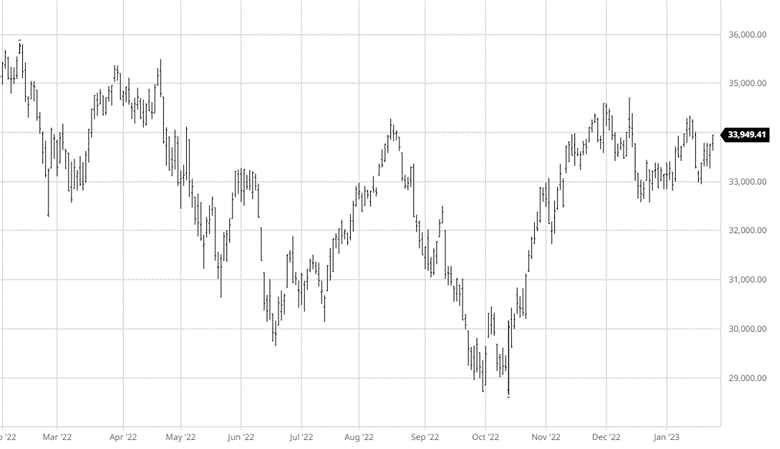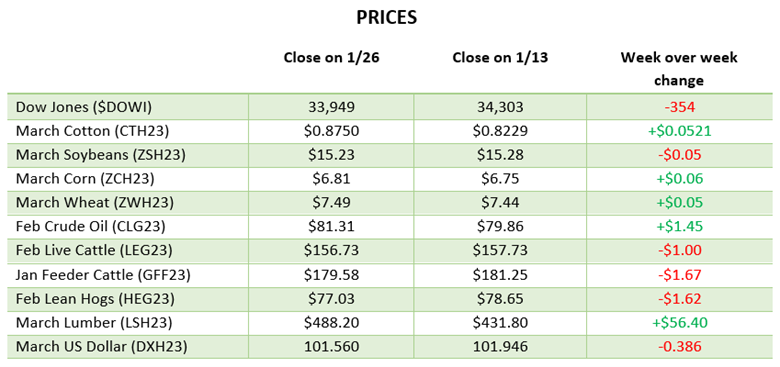Recap:
Last week I led off with how bad should bad look? Here are two responses from the question. The first is “there is a massive new home neighborhood going up next to a 40 acre reload full of Euro wood. The other was “for the first time, housing isn’t leading the shit show.” Very eloquent economic summaries. What we saw last week was a very quiet sideways futures market exhibiting some of those characteristics. The sideways trade was not a building of a trend but a sign of confusion and fear. No one is making a call one way or another at this price. If you look at the cash market, no one is making a call at any price. Historically that is friendly at some point. Let’s do the math.
Since the Fed speak turned up in February of 2022 the futures market has fallen over 76% from the 1477 high. During that same period, crude fell from $130 to $75 and corn from $8.27 to $6.26. All three commodity markets and most others have felt the effects of the raising of rates. Lumber, unlike the other markets, has pulled back close to its historic norm while all others have not. Is this price indicating a harder bottom coming? Considering the lead time needed in this industry it may take till Q4 of 23 or Q1 of 24 to answer.
Macro: The housing market does not bottom out until rates top.
The micro picture has many other dynamics. I think all would agree that these prices are not good for any producer. That fact alone will cause a slowdown in production. It is already in process. We see it in BC shipments and reports from eastern and southern mills. What is hard to determine is where the number was pre-Fed. While production is getting cut it may be from a 1.7 starts equivalent number. If we took the number from 1.7 to 1.4 then we are still over producing. The market needs to see a production number set for 1.2 starts and an erosion of Euro imports. Then we will have a market again.
Micro: Slowing production will cause upward spikes in prices.
The trade for 2023 will be the basis and the best form of protection will be forward pricing. It won’t be a year of making $15,000 on a truck. It’s back to futures 101. That said, build a fence around your risk. You have banks blowing up and many other created ramifications from the spike in rates. A basis trade needs calls against it. Forward pricing needs puts.
NEW CONTRACT:
Lumber Futures Volume & Open Interest
CFTC Commitments of Traders Long Report
https://www.cftc.gov/dea/futures/other_lf.htm
Lumber & Wood Pulp Options
https://www.cmegroup.com/daily_bulletin/current/Section23_Lumber_Options.pdf
About the Leonard Report:
The Leonard Lumber Report is a column that focuses on the lumber futures market’s highs and lows and everything else in between. Our very own, Brian Leonard, risk analyst, will provide weekly commentary on the industry’s wood product sectors.
Brian Leonard
312-761-2636































